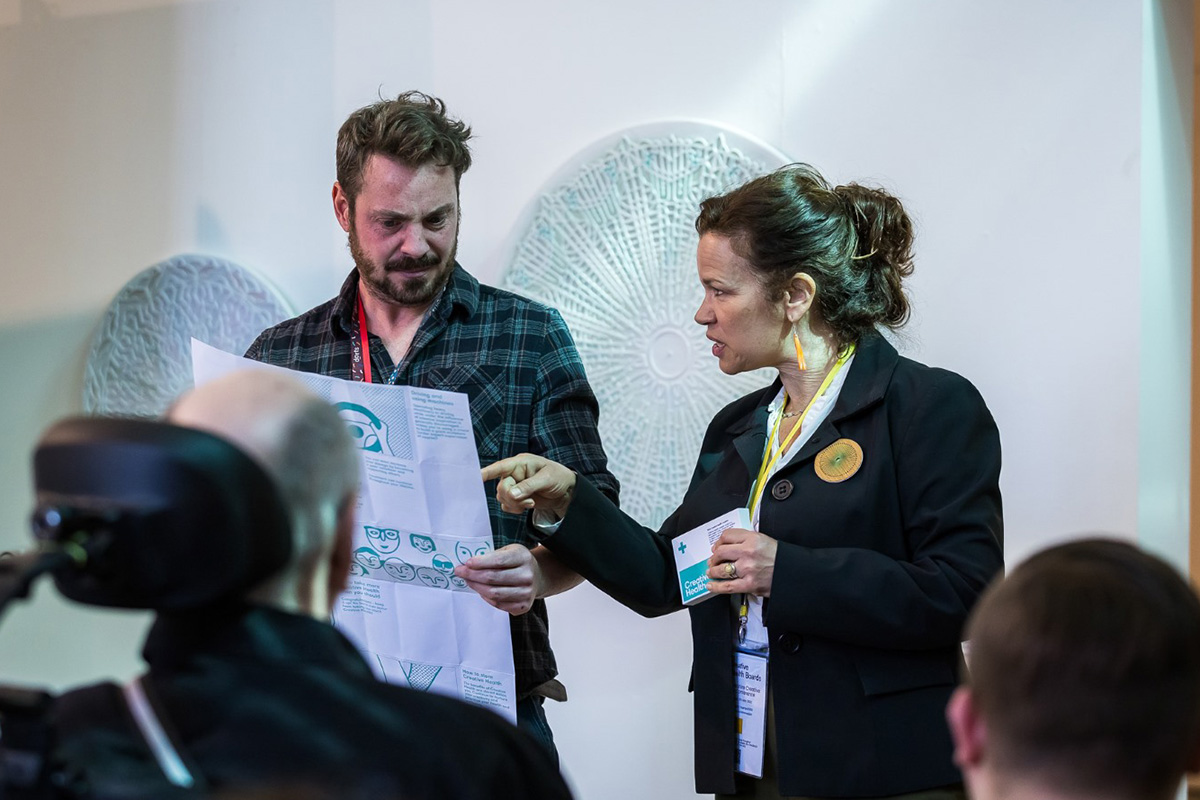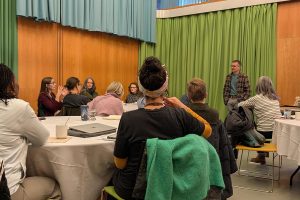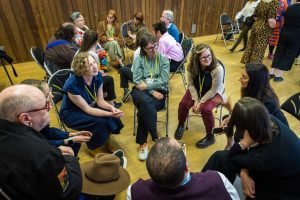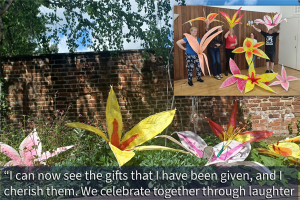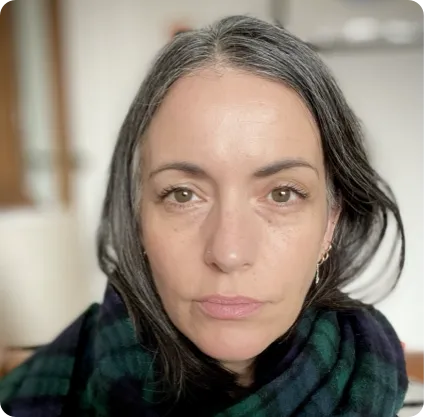
Eleanor Lockley, Researcher at Sheffield Hallam University, writes about the ideas and issues surrounding advocacy for Creative Health, and investigates ways of reaching out beyond those already involved.
I tasked myself with writing a blog about our Creative Health conference at darts but in the interest of transparency I completely messed up! I was so engrossed in the event that I stopped writing my notes! A massive faux par on my part as Susan Hampshaw provided an amazing summary of the day.
Anyway, it got me thinking about advocacy for Creative Health. And the elephant in the room: the people who attended our event are people who already understand the value of Creative Health! It’s not a criticism – more an observation. If we are going to be successful at widening the reach of Creative Health in Doncaster and beyond, we must start finding ways to reach those often considered to be ‘hard-to-reach people’. Wider public engagement is a tricky one that has always been tricky. The reality is that our event wasn’t designed for outreach – it was designed to highlight that our project exists and the work we are doing exists. Whilst we did a great job of showing how arts-based activities can be used for improved wellbeing – it possible our message didn’t reach as wide an audience as we need – we haven’t reached all the health sceptics yet!
The other reality is that if we want a creative health movement to continue in Doncaster, those who are advocating for it must continue to do so for people who have decision-making powers in health services and councils. It’s a never-ending task – shouting louder for those at the back! But we do still have to reach out to ‘grassroots’ level groups and create pathways of connection between the informal ‘knitting and natter’ groups and the larger organisations – should they want them!
Another issue lies with finding a balance in networks and connections that don’t overwhelm the local services. No dance group suddenly wants two hundred newcomers! Of course, that’s an exaggeration but you know what point I’m making here. Services can only provide for limited numbers.
But also, maybe some people don’t want to join an organised group – for a whole host of reasons such as they may not have time, or they may not have confidence, or it may not be an activity that interests them – the list goes on! When convincing an individual to join a group or class isn’t an option, creative health still is! It’s about finding out what that individual enjoys – be that listening to music and singing in the kitchen, sketching doodling or colouring, crafting (the list of creative activities is quite large!). The unspoken aspect about creative health is that usually the activities which bring a person some kind of joy are those that involve doing something fun and interesting – whether it’s formally or informally with people or not!
Of course, we can also see the value in people and communities coming together and post-covid this is especially true and so we must additionally advocate for that. We know that there is a loneliness epidemic which is exaggerated by social media and digital devices (whilst they are great for connectivity we also know that for some people it can be a false sense of connectivity!). So, I’ve personally come to see that doing creative activities with people is a bit like buy one get three free: buy into a creative health activity and get connection, community, a sense of wellbeing for free! It’s just about finding where these activities are!
Advocacy is also complicated because there’s no real way to measure it! How can we really know if we’ve made change to an individual’s life? The real answer is in most cases we can’t. If I can convince one person to possibly step outside their comfort zone and try something new, then I would be happy with that! But given that there are approximately 310,000 people living across Doncaster advocacy for Creative Health must be a collective effort! Events like the one we held on 7th May are a contribution to the existing movement of creative health in Doncaster. I’m also writing this as a blog on a website but I’m aware that word of mouth also goes far, and trust in hyper-local communities comes from key individuals, so maybe it’s not always about convincing everyone but rather the people who others trust!
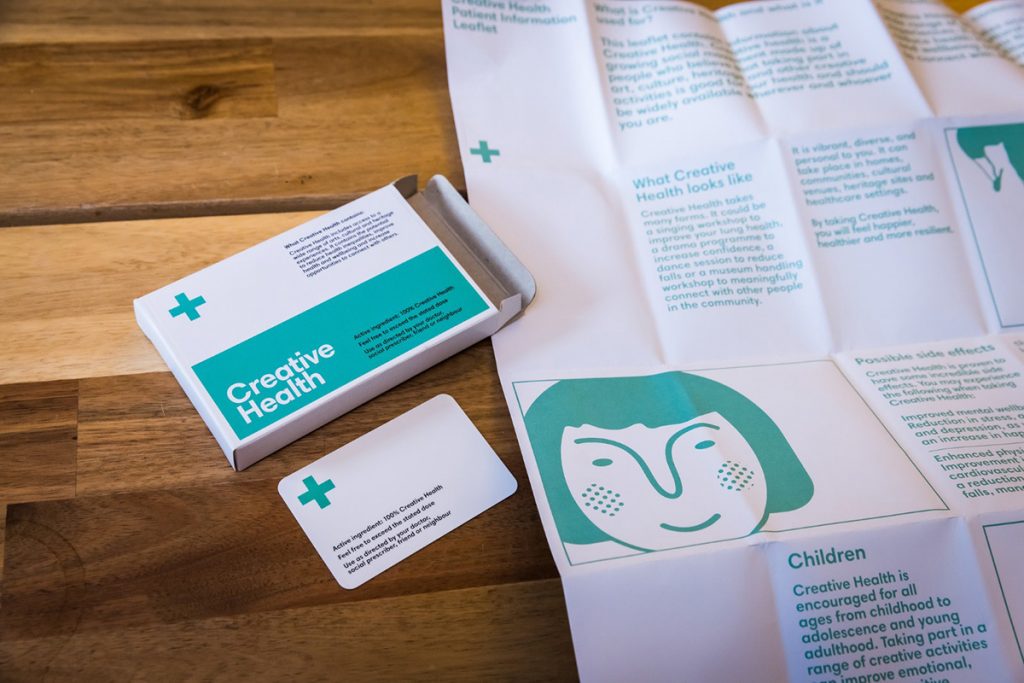
As a side note to reach our audience at our conference, we PR’d creative health using some ‘tangible take aways’! Delegates took away postcards with quotes from participants who’d attended creative health programmes at darts, Cast and heritage Doncaster and a creative health prescription designed as a Creative health Patient Information Leaflet.
Another creative way to push the creative health agenda was a poem performed by Dave Cartwright and Val Monti Holland. Which really reenforces the message to give creative health a go!
There are obviously multiple ways of reaching out to people and spreading the word and we as a team recognise that we need to take various approaches to reach different audiences and communities. We also know that across Doncaster there are many groups who meet in for example community hubs, and church halls. What we don’t know, is whether they know that what they’re doing could be considered as creative health activity! But we are trying to find out!
So, my quest to advocate Creative Health raises more questions than it answers but importantly I hope it’s made you question whether you do anything in your life that brings you joy or happiness and if not, then why not?! Is there something you could get involved in locally? Or if people aren’t you’re thing, then what can you do to help your wellbeing?! Can you persuade someone else that Creative Health might be the way forward for them?!
Next year we are planning to do another ‘conference’ – a co-created event with a focus on the lived experience of Creative Health.
If you’d like to share ideas about how we should advocate for Creative Health in Doncaster please get in touch via email chb@shu.ac.uk
